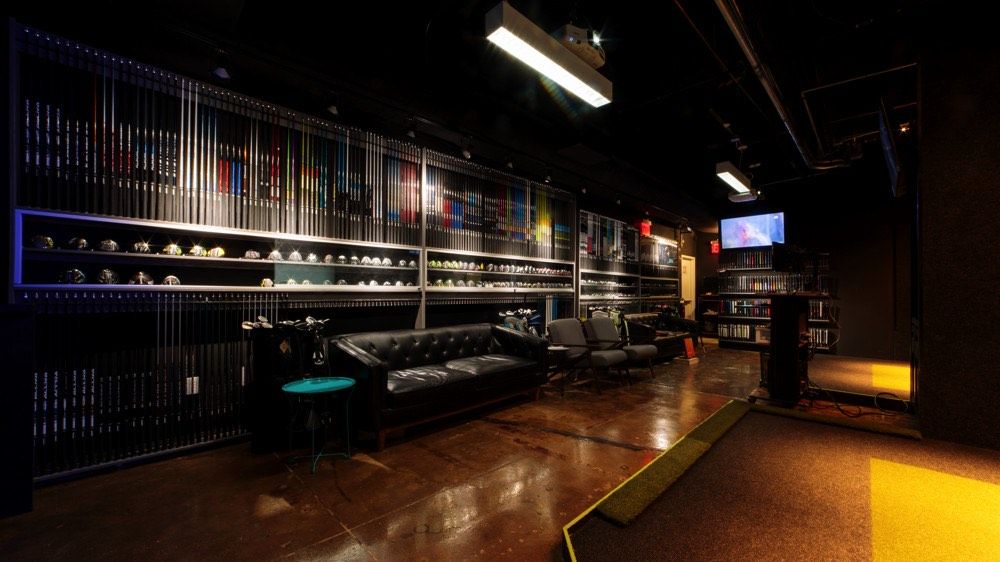6 Reasons Why You Should Never Buy a Stock Club
Posted by
Posted on
6 Reasons Why You Should Never Buy a Stock Club
One size does NOT fit all.
6 REASONS WHY YOU SHOULD NEVER BUY A STOCK BUILD
Stock builds, manufacturer (OEM) builds, off-the-rack clubs — there are a lot of ways to say “poorly fitted for your game.” While some retailers allow you to test a club prior to purchasing — be it a demo day or a few swings on a simulator — there’s a huge difference between dialing in the details and letting guesswork guide your game.
A stock build, or a club that’s off-the-shelf from an assembly line, is intended to work for the largest number of golfers. As such, details like swingweight, loft, lie, etc. can get lost in translation. So much so that two “identical” clubs off the shelf may differ 2 degrees or more, or even be a completely different swingweight.
To be clear, it’s not a lack of attention on the OEM’s part — they’re making clubs for the widest pool of people, and in crazy quantities that require some flexibility in the details. But opting for a stock build leaves measurable improvement on the table. Any golfer looking to better their game should know the pitfalls before purchasing off-the-rack — let’s discuss.
1. One Size Does Not Fit All
The “one size fits all” cliche is rarely true, least of all with golf equipment. Your game is unique — even if you play the same clubhead and shaft as your buddy, your height, swing speed, smash factor, attack angle, preferred conditions, and even frequency of play will no doubt differ. Because both your swing and your use case are unique, there’s no way to maximize your performance with clubs that weren’t built for your specific needs.
Stock clubs will always be built for the common denominator — average heights, average swingspeeds, and so on. And again, based on the sheer volume of production, there’s nothing a manufacturer can do to ensure every club is perfectly identical. That’s where fitting and hand-building come in — aside from matching you to the perfect components and specs (more on that later), the hand-building process ensures that there are no deviations from your specifications. No guesswork, just great golf clubs.
2. Equipment Options
A stock build will likely come with a stock shaft — usually a steel shaft produced for pennies on the dollar. You can choose a stiff shaft, or senior flex, regular, ladies — there are labels for every profile. But what there aren’t are regulations — there’s no “standard” for shaft flex/profile. A stiff shaft from OEM A will be decidedly different in kick point and other details than a stiff shaft from OEM B. Without those regulations, your ability to customize is limited.
Further, while there are definitely aftermarket shaft and grip options available through some manufacturers, you’re still limited to their selection. Premium shaft companies like Oban, VA Shafts, Kinetixx, and even some putter shafts are not readily available as an add-on to a stock build. When you choose a stock option, you’re choosing to ignore tens of thousands of shaft configurations that might take that shiny new clubhead to the next level.
3. Calibrated Machinery
These next few are specific to Club Champion but important nonetheless. When you’re fitted at Club Champion, your fitter will use technology like digital Mitchell loft and lie machines, swingweight machines, and more that are specially calibrated to match the machines in our build facilities. Meaning, every morning, our stores and build shops manually calibrate everything so every degree of loft, every gram of swingweight, every detail from your custom fitting can be exactly reproduced in the build.
Now let’s say you get the fitting at Club Champion and then send those specs to a manufacturer to match. It’s an option, but again — without that calibrated machinery, you will never be able to match the build to the build sheet. Different machinery = a different build than what you loved in the fitting bay.
4. Weight Sorting
Similarly, Club Champion builders have a process called weight sorting that sets them apart from a stock build. Club Champion has a component account with every manufacturer; clubheads, shafts, and grips are sent to CC build facilities as individual pieces. They’re then dry sorted by weight — this allows Club Champion builders to get as close to the intended swingweight as possible without having to modify with tricks of the trade. Even “identical” clubheads — same brand, same model, same loft, etc. — will vary based on manufacturing imperfections. A custom, weight-sorted build won’t leave something like that to chance.
5. Customization
Most golfers have preferences for things like grip logo placement, alignment aids, and so on. With a stock club, you’re limited to whatever comes off the assembly line. Sure, you could retro-fit a club to your liking, but that’ll take time and money to do properly. With a custom build, all of those preferences are considered up front and the club is built correctly the first time.
6. Perfect Fit Guarantee
And lastly, Club Champion custom builds are backed by a Perfect Fit Guarantee (PFG) — basically, what you see in the bay is what you should see on the course. If you fell in love with a club because you’re smoking it 25 yards farther, you should feel that love every time you tee off. Club Champion can back those results. If something feels off, that PFG allows you to bring your clubs back to your fitter for tweaks so you can find that loving feeling once more.
At the end of the day, the success of your golf game is entirely in your hands. How much you practice, how much you play, how much you’re willing to invest in the sport you love. You have infinite choices when it comes to your game but one thing is clear — stock clubs or clubs off-the-rack aren’t a viable choice for any golfer who wants to play their best. If you have stock clubs, test the theory — come see what Club Champion can find to beat your gamer. They guarantee your game will thank you.
- Categories: Fitting Experience, Product + Brands, Blog
- Tags: Fitting Experience
Related Articles
Myths and misconceptions about every corner of the golf industry continue to crop up and propagate, including those about Club Champion and the club fitting process.
Today, Ian is in the bay with a mammoth driver test, testing out 7 of the most forgiving drivers currently available to golfers.
Today, Ian and Mikey are both in the bay to show how driver fittings for people who specifically struggle with hooks and slices can use technology to override a swing deficiency.















